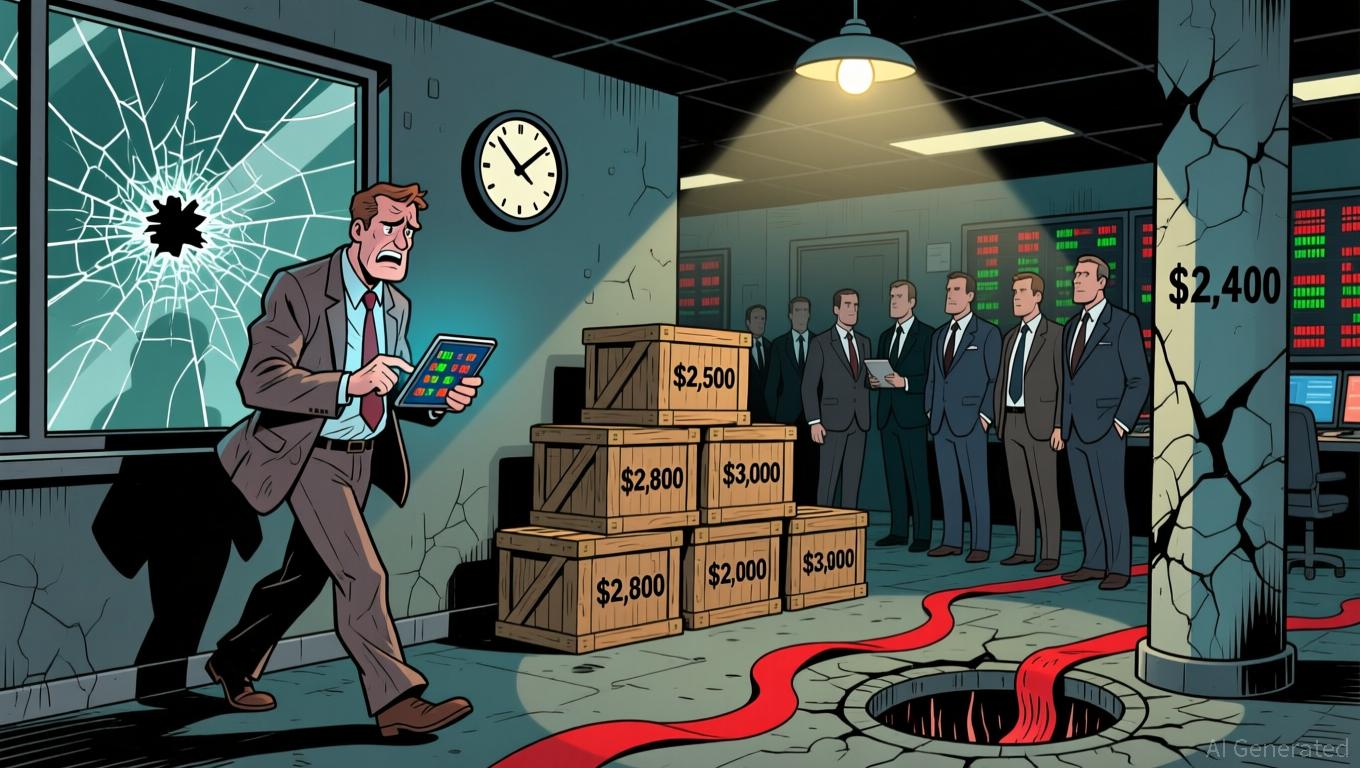The next standard in blockchain is code neutrality | Opinion
As financial leaders gathered recently at the Sibos conference, which took place in Frankfurt, Germany, the conversation is no longer about whether crypto belongs at the table. That debate is over. The focus has shifted to how banks, networks, and platforms can adapt in a world where blockchain and digital assets are no longer fringe experiments but building blocks of the global economy.
- The debate around crypto’s legitimacy ended — the focus has shifted to how banks and platforms can adapt to a financial system increasingly built on blockchain and digital assets.
- As blockchain matures, the key challenge is no longer just interoperability but code neutrality — ensuring no single company or investor can control or alter the core rules, making systems open, resilient, and trustworthy.
- The future of finance depends on neutral, transparent code similar to internet protocols like TCP/IP; only such systems can earn institutional trust, withstand pressure, and achieve the regulatory and market confidence needed for long-term adoption.
This shift creates enormous opportunity, but also a pressing challenge for the blockchain industry. It is simply not enough to connect systems and call it innovation. The real question is whether the infrastructure being built will be open, resilient, and trusted enough to last.
For years, blockchain’s rallying cry was interoperability, the effort to make blockchains talk to one another. Interoperability still matters, yet a deeper issue now sits underneath it: who gets to define the rules these systems run on?
Decentralization has always been the promise of blockchain, but it is often measured in narrow terms such as validator count, the Nakamoto coefficient, or the number of nodes. These metrics matter, but they do not tell the whole story, particularly in showing whether those validators are truly distinct. As the new adage goes, “you are only as decentralized as your most centralized link, so true decentralization must also extend to the code itself.”
Code neutrality is the principle that no single company or group of investors should be able to control or change the rules. Without this safeguard, decentralization becomes purely cosmetic. A system that looks distributed on the surface can still be vulnerable to capture at its core. And just as importantly, the standards that define the blockchain itself should remain open, ensuring that the foundation of these systems is transparent and not owned by one single entity.
Why neutrality matters
Projects that remain tied to one company or founder rarely stand the test of time. Leadership changes, business strategies pivot, or governments apply pressure. When that happens, systems built on centralized code can collapse overnight. Neutral code, by contrast, is built to outlast its creators. It can be maintained and advanced by a broad set of participants, reducing dependence on any single actor.
This is not theoretical. Proprietary systems that once looked dominant, from software platforms to closed networks, have consistently given way to open alternatives. Conversely, neutral protocols such as TCP/IP, the foundation of the internet, have endured for decades, growing stronger as more participants adopted and improved them.
Trust comes from transparency
Finance runs on trust. People and institutions will not place confidence in black boxes, especially when those systems manage money or governance. SWIFT, for example, is trusted not because of the brand itself but because its rules are collectively defined and globally verifiable.
For financial institutions, the fear is not abstract. No bank or asset manager wants to be locked into a system without recourse, stranded in an environment where rules could shift without their input. Code neutrality, paired with interoperability, addresses that fear by ensuring portability and long-term assurance. It allows institutions to take the right step today with confidence that their participation will remain future-proof.
Blockchain must offer the same assurance. When code is neutral and open, the rules are transparent, and participants know they will not shift without broad consensus. If code remains under the control of a single corporate entity, trust will always be conditional.
What we can learn from the past
The success of the internet was no accident. It thrived because its underlying protocols were neutral and open. TCP/IP was not owned by any one company, which meant anyone could build on top of it without asking permission, and no single actor could rewrite the rules. That neutrality created the conditions for decades of growth, where countless businesses and innovations could flourish side by side.
The contrast with closed systems is sharp. AOL tried to build a walled garden, where access was tightly controlled and rules were dictated from the top. It grew quickly, but its model could not withstand the openness of the wider web. When users were offered choices, neutrality won.
Blockchain networks face the same choice today. If they want to support global finance and trade at scale, they will need the same principle that powered the internet: neutral code that no one owns and everyone can trust.
Neutrality defines the path forward
A network with a single point of control is fragile. Neutral systems are stronger because they spread governance across many hands. They can withstand leadership transitions, regulatory scrutiny, or market shocks because no one actor holds the keys. This resilience is not just ideological; it’s a practical requirement for systems that will manage trillions in assets.
Regulation is also moving quickly to recognize this. In the United States, the CLARITY Act has introduced a framework for what it means for a blockchain to be “mature.” At its core, that definition depends on whether a system avoids a single point of control. The Act also recognizes that projects may begin centralized but can evolve into maturity over time. Those that can prove genuine decentralization will be rewarded with regulatory clarity and market confidence.
Neutral code is one way to demonstrate that maturity. It provides visible evidence that no single entity controls the system and that the rules are transparent and verifiable. That proof is what regulators, institutions, and users will demand.
The new standard
Interoperability helped blockchains connect. Code neutrality will help them last. Without it, decentralization risks becoming a slogan. With it, networks can earn trust, withstand pressure, and support innovation for decades to come.
The future of finance will not be defined by systems where one company owns the rules and everyone else must comply. It will be defined by systems where the rules are open, transparent, and collectively owned. Code neutrality is how blockchain turns that vision into reality.
This article was co-authored byShyam NagarajanandDaniela Barbosa.
Shyam Nagarajan is an accomplished technology executive with over 20 years of experience leading large-scale innovation in AI, blockchain, and digital transformation. As Chief Operating Officer of Hedera, he oversees operational strategy and execution, focusing on enhancing operational resilience, accelerating enterprise adoption of Hedera network services, and fostering innovation across Hedera’s open source ecosystem.
Daniela Barbosa serves as General Manager of Decentralized Technologies at the Linux Foundation and Executive Director of LF Decentralized Trust. With more than 20 years of technology experience, she is a leading voice for the power of openly developed decentralized technologies to optimize critical infrastructure for efficiency, privacy, and inclusivity.
Disclaimer: The content of this article solely reflects the author's opinion and does not represent the platform in any capacity. This article is not intended to serve as a reference for making investment decisions.
You may also like
XRP News Today: Abu Dhabi’s Green Light Establishes UAE as a Pioneer in Stablecoin Development
- Ripple's RLUSD stablecoin gains Abu Dhabi regulatory approval as UAE advances digital finance leadership. - ADGM's "Accepted Fiat-Referenced Token" designation enables institutional use for lending and cross-border payments. - RLUSD's $1.2B market cap growth reflects institutional demand, backed by USD reserves and dual blockchain operations. - UAE's ADGM-DIFC regulatory synergy attracts global fintechs , with Ripple expanding partnerships across Africa and Asia. - Regulatory milestones position RLUSD to
Ethereum Updates: Ethereum Drops to $2,800, Prompting Surge in Demand for ZKP's Hardware-Based Presale
- Ethereum's price fell below $2,800, triggering $6.5M liquidations and testing critical support levels amid declining on-chain demand metrics. - Institutional players like BitMine accumulated 3.62M ETH (~$10.4B) despite the selloff, signaling long-term bullish conviction. - ZKP's hardware-driven presale gained traction with $17M in ready-to-ship Proof Pods and Miami Dolphins partnership for privacy-focused sports analytics. - Mutuum Finance's $19M DeFi presale and ZKP's auction model with $50K wallet caps

Vitalik Buterin Supports ZKsync: What This Means for Layer 2 Scaling
- Vitalik Buterin endorsed ZKsync in late 2025, highlighting its "underrated and valuable" work alongside the Atlas upgrade achieving 15,000 TPS and $0.0001 fees. - ZKsync's zero-knowledge rollups and EVM compatibility enabled institutional adoption by Deutsche Bank , Sony , and Goldman Sachs for cross-chain and enterprise use cases. - The Fusaka upgrade aims to double throughput to 30,000 TPS by December 2025, positioning ZKsync to compete with Polygon zkEVM and StarkNet in Ethereum's Layer 2 landscape. -

The ZK Atlas Enhancement: Revolutionizing Blockchain Scalability?
- ZKsync's 2025 Atlas Upgrade achieves 15,000–43,000 TPS with sub-1-second finality, addressing Ethereum L2 scalability bottlenecks via Airbender proofs and modular OS. - DeFi protocols like Aave and Lido leverage ZKsync's $0.0001/tx costs to unify liquidity, while Deutsche Bank and Sony adopt its trustless cross-chain infrastructure for compliance and transparency. - ZK token surged 150% post-upgrade, with TVL hitting $3.3B and analysts projecting 60.7% CAGR for ZK Layer-2 solutions by 2031 amid instituti

